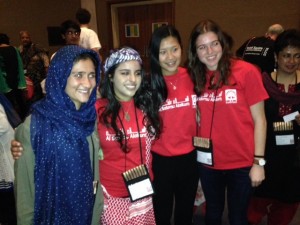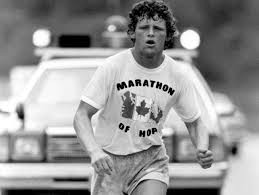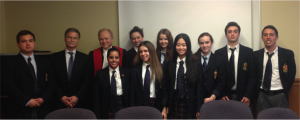 On Friday, October 10, I left Montreal for Melbourne, Australia. I was very excited to see Connor again and to meet all the kids at Carey Grammar. From what Connor had told me, I knew what to expect, but I was still a little bit nervous. What if I don’t like the kids? What if I’m not able to keep up with the schoolwork? What if I didn’t like my host mother’s cooking? These were all little things that nagged me while I was on the plane, but I pushed them to the back of my mind.
On Friday, October 10, I left Montreal for Melbourne, Australia. I was very excited to see Connor again and to meet all the kids at Carey Grammar. From what Connor had told me, I knew what to expect, but I was still a little bit nervous. What if I don’t like the kids? What if I’m not able to keep up with the schoolwork? What if I didn’t like my host mother’s cooking? These were all little things that nagged me while I was on the plane, but I pushed them to the back of my mind.
Because of a strange flight schedule, I had an 11-hour layover in Los Angeles. I took the time to meet up with my cousin Bryant, who I had not seen for the longest time. They took me around LA and I saw some famous Los Angeles landmarks, such as Rodeo Drive and Sunset Boulevard. Bryant is a high-end car aficionado, so we drove by the dealerships for Ferrari, Lamborghini, Maserati, and many more. Every time we saw a fancy car on the street, he made sure to point out what make and model it was. After driving around LA for almost an hour, he took me on a hike in the foothills. At the summit, we had a 360° breathtaking view of LA. I saw the Hollywood sign, downtown and Century City in the distance. It was a great way to cap off the day.
The one thing I was worried about most was sleeping on the plane ride, but that took care of itself. After getting up at 5:30 am Montreal time and having to stay up until my 11:00 pm LA time flight, I was exhausted and ended up sleeping 11 of the 15 hours on the plane. I started to get butterflies as the plane approached Melbourne on Sunday morning. The questions that I had pushed to the back of my mind started to come back. What if I got stuck in customs? I think I may have checked to see if I still had my passport about every 30 seconds. Luckily, passport control was no problem and I breezed right through and connected with my host family.
My first thought was that everything is backwards here. We drive on the right, they drive on the left. We’re about to start winter, they’re about to start summer. We have 2% fat milk, they have 98% fat free milk (no I’m not making that up). It took a really long time to get used to the accents. I didn’t understand anyone for the first few days I was here. I think I broke a record for saying the words “What?” or “Sorry, can you repeat that?” Eventually I got used to it, and I think I might develop some Australian mannerisms while I’m here (especially the words “oy” and “cheers”). The kids here at Carey are super nice and I’m having an amazing time. I am so happy I am getting to experience this amazing country. I do miss everyone in Montreal though, and I can’t wait to see you all again. – Sam Freder ’17
P.S. Go Habs go! What a start to the season!

![photo 2[2]](http://wearelcc.ca/wp-content/uploads/2014/10/photo-22-300x225.jpg)


